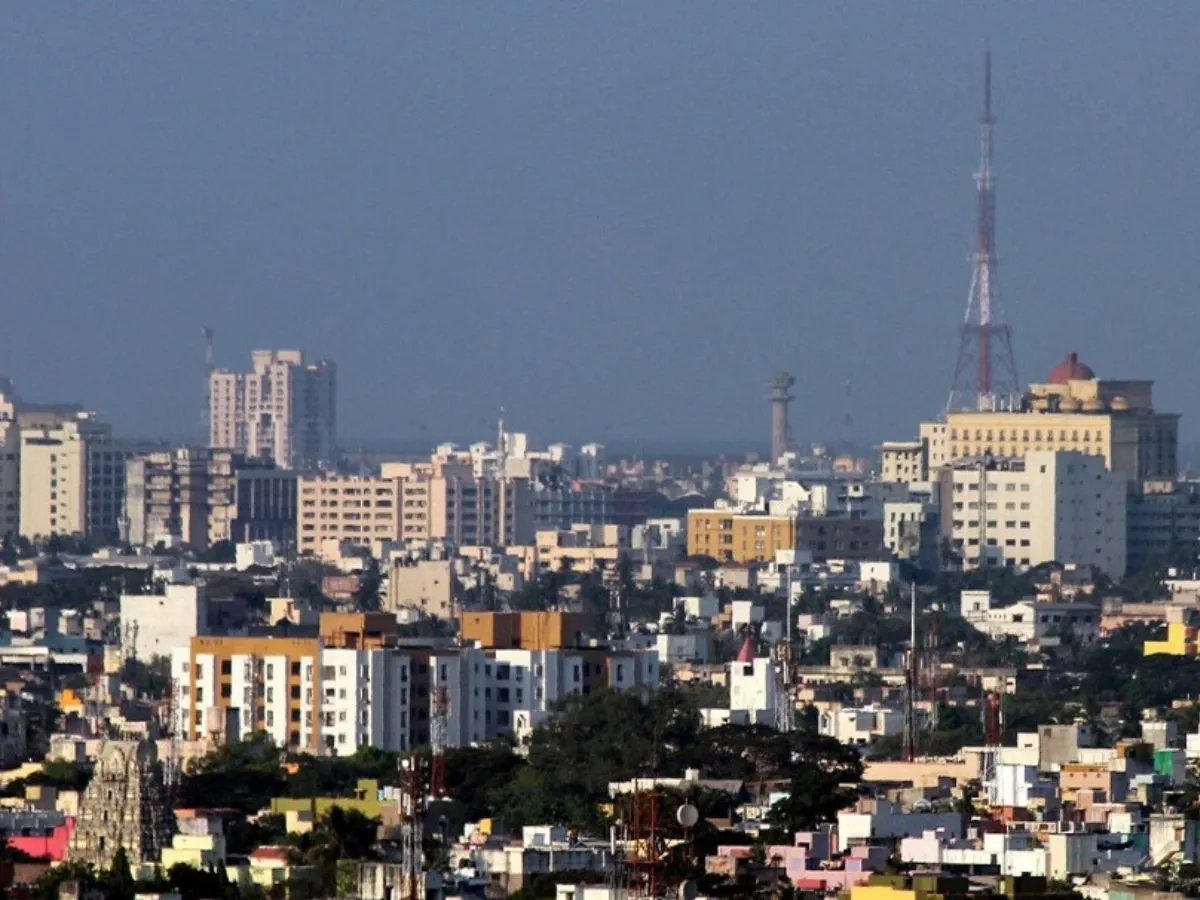Urbanization has reached such a level in Tamil Nadu that the functioning of the CMDA (Chennai Metropolitan Development Authority) is under the lens now.
A failing CMDA is an indication of the poor state of urban governance in the state reflected in declining migration from villages. Seasonal migrations in search of jobs are a thing of the past in Tamil Nadu.
The CMDA covers five districts with nearly 20% of the state population. The five districts lead in economic output. Thiruvallur tops the state in share of Gross State Value Addition (GSVA) at 9.6%, followed by Chennai at 8.1%. Similarly, Chennai accounts for 14% of the state’s income from the services sector followed by 9% for Thiruvallur and 7.8 % in Kancheepuram.
This year marks the 51st year of the establishment of the CMDA, which is the nodal agency for key regulations and policy coordination among different departments and authorities of the state capital. In 2022, CMDA was expanded by adding 4,715 sq. km (397%) — from 1189 sq. km to 5904 sq. km. After expansion, Chennai CMDA covers the second largest land area, next only to Delhi. The CMDA has four municipal corporations, 12 municipalities, 14 town panchayats, and 22 panchayat unions with 1,321 villages.
Also Read: TN’s urban planning ignores climate change threat, causing huge losses
The land market has become a focal point for the growth and development of cities, towns, and peripheral areas. And the CMDA is tasked with developing the land market, while maintaining civic priorities and governance demands.
The CMDA covers five districts with nearly 20% of the state population. The five districts lead in economic output. Thiruvallur tops the state in share of Gross State Value Addition (GSVA) at 9.6%, followed by Chennai at 8.1%. Similarly, Chennai accounts for 14% of the state’s income from the services sector followed by 9% for Thiruvallur and 7.8 % in Kancheepuram
All these indices tell us that CMDA should be a leader with an exemplary performance record. But that has not been the case. Officials and people’s representatives in the CMDA have been persistent failures in building a comprehensive institutional mechanism for good governance. The recent floods are a telling indicator of a failing CMDA that covers hundreds of water bodies, many of which are under threat due to encroachments and dumping of solid waste.
Even before the expansion, the CMDA had been facing multiple structural challenges such as in creating institutional structures for new building plan approvals; setting up clear institutional regulatory measures for association with local bodies in and around the CMDA area; and driving people’s participation in framing Master Plans especially in planning of roads, stormwater drains, solid waste handling and footpath design. The CMDA lacks a strong institutional apparatus for effective management of key development projects.
The new building plan approval department faces an acute shortage of manpower and technology. Approval processes are often ambiguous which leads to malpractices and corruption. Unauthorized building activities have been increasing mainly due to the cumbersome and complex regulatory systems at multiple levels. Centralization has only exacerbated the problem.
The approach to formulation, framing, and implementation of the Master Plan of CMDA has not been in the best interests of the people of Chennai city. The Master Plans neither took stock of what went wrong in the rest of the world nor focused on the sectors critical for growth and development of the CMDA areas in the long term. The First Master Plan period was 1976-1996, second Master Plan period is 2006-2026. The CMDA has already framed the third Master Plan for 2026-2046 without adequate inputs on best practices from lessons learned from the first and second plans.
Also Read: Chennai is a mega construction site but GCC can ease pain points
Recently, the Confederation of Real Estate Developers Association of India (CREDAI) wrote to the chief minister asking the government to cut through the bureaucratic red tape impeding the construction of high-rises in the city. The CMDA was entrusted to approve new building plans for highrise buildings until July 2023. Now the state housing department has taken back the power from the CMDA. This centralization hints at dubious vested interests taking control since CMDA regulation promises more transparency to an extent at least.
The approach to formulation, framing, and implementation of the Master Plan of CMDA has not been in the best interests of the people of Chennai city
Between 2006 and 2023 (till September), a total of 7296 non highrise buildings were approved by the CMDA. In the current calendar year from January to December 2023, the CMDA had approved a total of 518 non-high rise new building plans as against thousands of applications being received every month. For the same period in 2022, only 422 non-high-rise new building plans were approved. All through the past, total approvals were hovering in this range.
The time taken to approve the new building plans varied from a minimum of a month to a maximum of a year. The process was too time consuming and promoted rent seeking.
Regarding highrises, between 2006 and 2023 a total of 1,024 highrise buildings were approved by the CMDA. The CMDA’s approvals given for highrise buildings have varied across the last decade. In the current calendar year (2023), 27 highrise building plans were approved, 58 highrise building plans were approved in 2022, and 66 were approved in 2021 and so on.
The spatial growth of the city and its peripheral areas has been underestimated. Concrete steps towards achieving world-class physical infrastructure facilities have not been taken. The peripheral areas of the CMDA have huge potential for growth. Moreover, the CMDA has not paid adequate attention to leveraging tourism, heritage, culture, and civilization values.
(The author is an economist and public policy expert)
